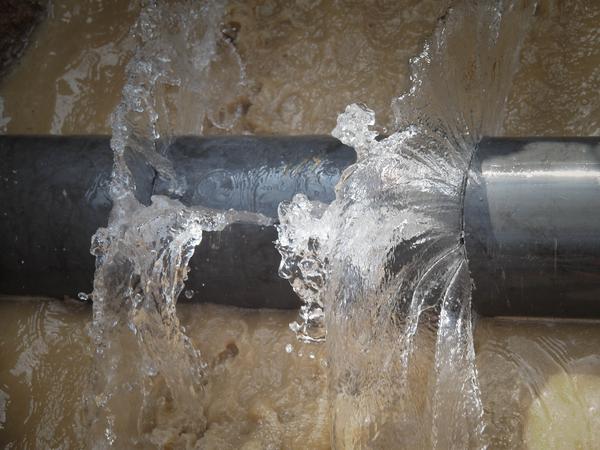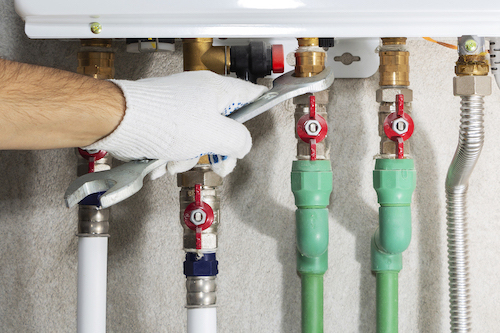Right here below you might get more first-rate details concerning Do’s And Don’ts For Homeowners Managing With Water Damage.

What should you do if a pipes bursts in your residence? Do you desire a mini-waterfall and also flooding in a location of your residence? If you find yourself in this circumstance, you have to act quickly. The longer you wait, the extra extreme the damages that can take place to your building. The clearheadedness is type in these occasions. For these factors, you need to discover how to act in the event of a burst pipes. Due to the fact that time is of the significance, inspect out the complying with tips below to assist you act fast.
Shut Off the Key Waterline Shutoff
The first thing to do? Close the shut-off valve. Seek the regional shut-off valve to switch off the water in one certain area only. Go for the main water line shutoff as well as turn it off if you do not understand where the localized shut-off shutoff is. This step will certainly remove the water right away in your whole residence. Typically, the major shutoff is found outside the residence beside the water meter. If it's not there, you can also locate it in two areas: in the basement at eye level or the first floor on the ground. Commonly, home builders put the shut-off shutoff in the main ground degree restroom or appropriate beside it.
Call Water Damage Repair Pros for Help
After closing the water resource, call the professionals for help. With their professional assistance, you can stop a lot bigger water damages including warped baseboards, loose ceramic tiles, or harmed structures.
Paper the Damages For Insurance policy
While you're waiting for the pros to arrive, get some documentation of the damages created by the wayward pipe. Do close-up shots of the damaged prized possessions as well as areas.
Salvage Things That Can Be Conserved
Check out the harmed products as well as take out the most crucial ones from the pile when you're done taking pictures. Dry them off in a dry/warm place away from the broken location as well as try to preserve them as much as you can. Drag as much moisture as you can to the product so it can start to dry out.
Start the Drying Process
Fortunately, the water from your waterlines is currently clean so you do not have to fret concerning drain water. The moving water may have interrupted the dust and also debris in your floorboards as well as carpetings. Blot out as much water as you can from the surfaces with old towels.
Specialists are the only people certified to assess properly and also repair the burs pipelines and succeeding damages. As always, pipelines do not just instantly burst out of the blue. They generally give quiet warnings like bubbling paint, water spots. Unusual noises in the plumbing, caving ceiling, mildewy smell, or peeling wallpaper. Bear in mind of these signs as well as do some safety nets so you can nip any problems in the bud.
What should you do if a water pipeline bursts in your home? For these factors, you require to learn exactly how to act in the occasion of a ruptured water pipeline. After shutting the water resource, call the specialists for help. With their professional assistance, you can avoid a lot larger water damage consisting of deformed baseboards, loose ceramic tiles, or damaged frameworks. The good news is, the water from your waterlines is currently clean so you don't have to worry regarding drain water.
How to Handle a Burst Pipe and Minimize Damage
Steps to Take Ahead of Time
If you own property in an area that experiences cold weather, you need to be aware of seasonal maintenance tasks that will help you protect your property as the weather changes each year. One of the most important steps is to winterize your pipes to ensure they won't freeze or burst when the temperature drops. This includes action items like insulating any exposed pipes, detaching garden hoses and covering outdoor faucets. If the weather gets cold enough, you may even consider leaving a faucet dripping or opening cabinet doors during the coldest parts of the day.
No matter how prepared you might be, accidents and emergencies still happen. You'd be wise to set up a savings account specifically for your property so you have a "rainy day" fund set aside for unexpected expenses. All homes—regardless of age, location or condition—will inevitably need some form of emergency repair.
Steps to Take for Frozen Pipes
A frozen pipe will not necessarily burst, so if you can catch a frozen pipe early on, you could save yourself a major headache. When your area experiences frigid temperatures, be sure to check your plumbing and keep an eye out for warning signs like faucets only releasing small amounts of water or toilets not refilling when flushed. If you do run into one of these issues, you're likely dealing with a frozen pipe.
If this happens, your first step should be to cut off the water supply to that section of the plumbing. Expanding and freezing water can quickly cause damage. Even if the water supply is shut off, you will likely still deal with some leaking from the water that defrosts after the pipe has thawed. Be prepared with a mop, bucket and/or towels to quickly soak up any excess water.
In order to thaw a frozen pipe, you can use a space heater, infrared or incandescent heat lamp, or even a hairdryer to warm up the frozen area. Heat tape is also an option and should be used according to manufacturer instructions. Do not use any sort of open flame to thaw frozen pipes, as it poses a major fire hazard and can damage your pipes further.
Steps to Take for a Burst Pipe
Water damage claims are the second most common insurance claim in the U.S. When you're dealing with a frozen pipe, the water continues to expand as it freezes, which creates pressure that can cause a pipe to burst. When this happens, the crack or leak in the pipe allows water flow from the pipe to enter your home where it shouldn't. If a pipe does burst, you need to act quickly to mitigate property damage and repair cost.
Your very first step should be to shut off your main water supply to minimize flooding—typically the most expensive damage to address. Once you've shut off the water supply, make sure you identify the entire area that has been impacted by the leak. Remove as much water as possible—as quickly as possible—using a mop, sponges, towels or a shop vacuum or wet/dry vacuum. To prevent long-term damage due to moisture build-up, run a dehumidifier or fan in the affected area. Contact a licensed plumber to ensure the pipe is correctly repaired before running any water to that section of the home again. Burst pipes and the associated water damage are something you absolutely want to avoid as a property owner. If you've had to learn your lesson the hard way, don't let yourself get caught in a similar situation during the next spell of cold weather. The best way to deal with frozen or burst pipes is to prevent them in the first place—proactive winter maintenance will save you time, money and a whole lot of stress.

As a serious person who reads on Rules For Handling Water Damage, I figured sharing that piece of content was necessary. Liked our piece of writing? Please share it. Help someone else find it. Thank you for going through it.